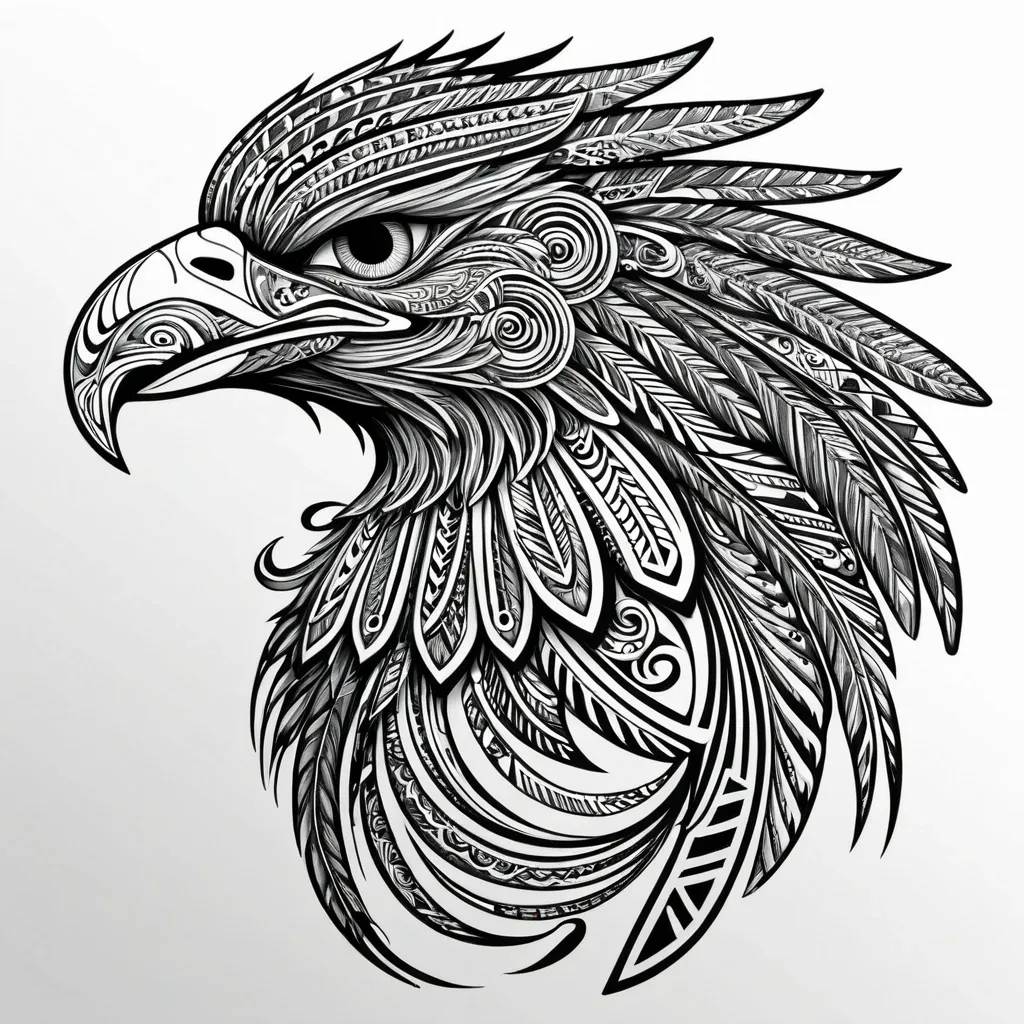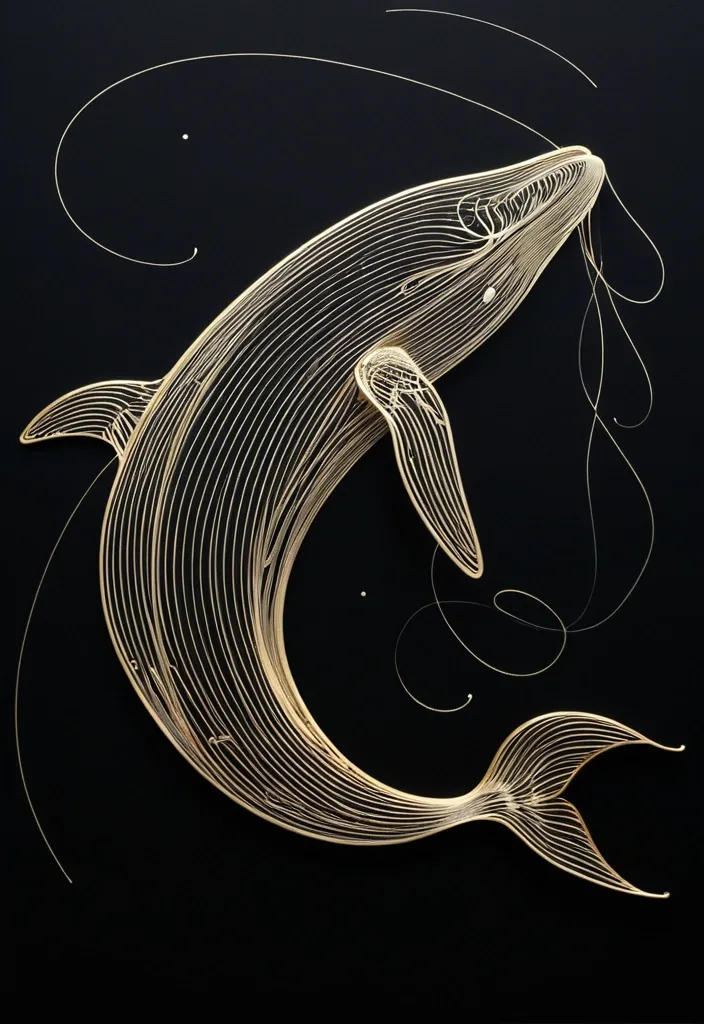Search Results for abs
Explore AI generated designs, images, art and prompts by top community artists and designers.

Generate Gorgeous female boss , Japanese woman , pointy face , bimbo , hourglass body , abnormally massive female bodybuilder , gorgeous , close up , full lips , big booty , red hair breast , short bob-cut , bangs cover forhead design hair , feminine silhouette , too big breast , big booty , sexy thighs abs , silhouette , up close , flexing biceps , beautiful green eyes , legs are iconic and defining physical feature , both visually and in terms of combat ability.wearing an outfit that is a striking blend of elegance , power , and femininity , designed to command attention in any room. The suit is tailored to perfection , hugging the wearer’s curves with precision while emphasizing a structured silhouette. The fabric itself is a refined grey tweed patterned with subtle white grid lines , giving the suit a texture that feels both sophisticated and modern. The blazer features broad blue lapels and gold button accents , adding a luxurious touch that elevates the look beyond typical business attire. The matching high-waisted trousers elongate the frame , further enhancing the poised and commanding effect of the ensemble.The styling choices amplify the boldness of the suit. The inner blouse is a silky , greybutton-down shirt that complements the tweed’s tone while introducing a softer , feminine balance to the sharp tailoring of the jacket. The blouse peeks out neatly from under the blazer , maintaining elegance without drawing focus away from the suit’s commanding cut. Accessories are kept minimal yet intentional: a delicate layered gold necklace and hoop earrings that add glimmers of light and luxury without overpowering the outfit. The choice oframes the face with both confidence and glamour , completing the commanding visual.Altogether , this look communicates a blend of authority and allure. It is business-ready yet fashion-forward , balancing corporate structure with vibrant femininity. The color palette blue , grey and gold avoids being overly delicate , instead embracing the richness of texture , structure , and presence. This is the kind of ensemble that speaks to ambition , sophistication , and personal style—ideal for someone who thrives in positions of influence but insists on expressing her individuality with bold elegance. It’s not just clothing—it’s a statement of power wrapped in grace. In luxury living legs that could crush a watermelon , skirt high boots are a bold and striking statement piece , crafted in glossy black patent leather that gives them a sleek , polished finish. Rising to just below the knee , the boots feature three adjustable buckle straps along the shaft , adding both edge and detail to their design. The towering stiletto heel , paired with a thick platform sole , creates an ultra-dramatic silhouette that elongates the leg and exudes power and confidence. With their combination of shine , height , and structure , these boots perfectly balance fierce femininity with high-fashion allure. Gorgeous brown eyes , big lips glossy lips , enormous breast , enormous butt She is wearing a revealing teal and gold bikini-style outfit consisting of a halter top with thin straps and chain accents that barely covers her exaggerated bust , paired with a high-cut thong bottom featuring a dangling green gem centerpiece and gold chains , complemented by long armored gauntlets on her forearms. Kimono ,

Generate Gorgeous female boss , Japanese woman , pointy face , bimbo , hourglass body , abnormally massive female bodybuilder , gorgeous , close up , full lips , big booty , red hair breast , short bob-cut , bangs cover forhead design hair , feminine silhouette , too big breast , big booty , sexy thighs abs , silhouette , up close , flexing biceps , beautiful green eyes , legs are iconic and defining physical feature , both visually and in terms of combat ability.wearing an outfit that is a striking blend of elegance , power , and femininity , designed to command attention in any room. The suit is tailored to perfection , hugging the wearer’s curves with precision while emphasizing a structured silhouette. The fabric itself is a refined grey tweed patterned with subtle white grid lines , giving the suit a texture that feels both sophisticated and modern. The blazer features broad blue lapels and gold button accents , adding a luxurious touch that elevates the look beyond typical business attire. The matching high-waisted trousers elongate the frame , further enhancing the poised and commanding effect of the ensemble.The styling choices amplify the boldness of the suit. The inner blouse is a silky , greybutton-down shirt that complements the tweed’s tone while introducing a softer , feminine balance to the sharp tailoring of the jacket. The blouse peeks out neatly from under the blazer , maintaining elegance without drawing focus away from the suit’s commanding cut. Accessories are kept minimal yet intentional: a delicate layered gold necklace and hoop earrings that add glimmers of light and luxury without overpowering the outfit. The choice oframes the face with both confidence and glamour , completing the commanding visual.Altogether , this look communicates a blend of authority and allure. It is business-ready yet fashion-forward , balancing corporate structure with vibrant femininity. The color palette blue , grey and gold avoids being overly delicate , instead embracing the richness of texture , structure , and presence. This is the kind of ensemble that speaks to ambition , sophistication , and personal style—ideal for someone who thrives in positions of influence but insists on expressing her individuality with bold elegance. It’s not just clothing—it’s a statement of power wrapped in grace. In luxury living legs that could crush a watermelon , skirt high boots are a bold and striking statement piece , crafted in glossy black patent leather that gives them a sleek , polished finish. Rising to just below the knee , the boots feature three adjustable buckle straps along the shaft , adding both edge and detail to their design. The towering stiletto heel , paired with a thick platform sole , creates an ultra-dramatic silhouette that elongates the leg and exudes power and confidence. With their combination of shine , height , and structure , these boots perfectly balance fierce femininity with high-fashion allure. Gorgeous brown eyes , big lips glossy lips , enormous breast , enormous butt She is wearing a revealing teal and gold bikini-style outfit consisting of a halter top with thin straps and chain accents that barely covers her exaggerated bust , paired with a high-cut thong bottom featuring a dangling green gem centerpiece and gold chains , complemented by long armored gauntlets on her forearms. Stockings ,

Generate Gorgeous female boss , Japanese woman , pointy face , bimbo , hourglass body , abnormally massive female bodybuilder , gorgeous , close up , full lips , big booty , red hair breast , short bob-cut , bangs cover forhead design hair , feminine silhouette , too big breast , big booty , sexy thighs abs , silhouette , up close , flexing biceps , beautiful green eyes , legs are iconic and defining physical feature , both visually and in terms of combat ability.wearing an outfit that is a striking blend of elegance , power , and femininity , designed to command attention in any room. The suit is tailored to perfection , hugging the wearer’s curves with precision while emphasizing a structured silhouette. The fabric itself is a refined grey tweed patterned with subtle white grid lines , giving the suit a texture that feels both sophisticated and modern. The blazer features broad blue lapels and gold button accents , adding a luxurious touch that elevates the look beyond typical business attire. The matching high-waisted trousers elongate the frame , further enhancing the poised and commanding effect of the ensemble.The styling choices amplify the boldness of the suit. The inner blouse is a silky , greybutton-down shirt that complements the tweed’s tone while introducing a softer , feminine balance to the sharp tailoring of the jacket. The blouse peeks out neatly from under the blazer , maintaining elegance without drawing focus away from the suit’s commanding cut. Accessories are kept minimal yet intentional: a delicate layered gold necklace and hoop earrings that add glimmers of light and luxury without overpowering the outfit. The choice oframes the face with both confidence and glamour , completing the commanding visual.Altogether , this look communicates a blend of authority and allure. It is business-ready yet fashion-forward , balancing corporate structure with vibrant femininity. The color palette blue , grey and gold avoids being overly delicate , instead embracing the richness of texture , structure , and presence. This is the kind of ensemble that speaks to ambition , sophistication , and personal style—ideal for someone who thrives in positions of influence but insists on expressing her individuality with bold elegance. It’s not just clothing—it’s a statement of power wrapped in grace. In luxury living legs that could crush a watermelon , skirt high boots are a bold and striking statement piece , crafted in glossy black patent leather that gives them a sleek , polished finish. Rising to just below the knee , the boots feature three adjustable buckle straps along the shaft , adding both edge and detail to their design. The towering stiletto heel , paired with a thick platform sole , creates an ultra-dramatic silhouette that elongates the leg and exudes power and confidence. With their combination of shine , height , and structure , these boots perfectly balance fierce femininity with high-fashion allure. Gorgeous brown eyes , big lips glossy lips , enormous breast , enormous butt She is wearing a revealing teal and gold bikini-style outfit consisting of a halter top with thin straps and chain accents that barely covers her exaggerated bust , paired with a high-cut thong bottom featuring a dangling green gem centerpiece and gold chains , complemented by long armored gauntlets on her forearms. Pencil shirt ,

Generate Gorgeous female boss , bimbo , hourglass body , abnormally massive female bodybuilder , gorgeous , close up , full lips , big booty , redheaded , freckles on face and breast , Generate Gorgeous female boss , bimbo , hourglass body , abnormally massive female bodybuilder , gorgeous , close up , full lips , big booty , redheaded , freckles on face and breast , braided design hair , feminine silhouette , too big breast , big booty , sexy thighs abs , silhouette , up close , flexing biceps , beautiful green eyes , legs are iconic and defining physical feature , both visually and in terms of combat ability.wearing an outfit that is a striking blend of elegance , power , and femininity , designed to command attention in any room. The suit is tailored to perfection , hugging the wearer’s curves with precision while emphasizing a structured silhouette. The fabric itself is a refined grey tweed patterned with subtle white grid lines , giving the suit a texture that feels both sophisticated and modern. The blazer features broad blue lapels and gold button accents , adding a luxurious touch that elevates the look beyond typical business attire. The matching high-waisted trousers elongate the frame , further enhancing the poised and commanding effect of the ensemble.The styling choices amplify the boldness of the suit. The inner blouse is a silky , greybutton-down shirt that complements the tweed’s tone while introducing a softer , feminine balance to the sharp tailoring of the jacket. The blouse peeks out neatly from under the blazer , maintaining elegance without drawing focus away from the suit’s commanding cut. Accessories are kept minimal yet intentional: a delicate layered gold necklace and hoop earrings that add glimmers of light and luxury without overpowering the outfit. The choice of voluminous , honey-brown braids cascading down her shoulders frames the face with both confidence and glamour , completing the commanding visual.Altogether , this look communicates a blend of authority and allure. It is business-ready yet fashion-forward , balancing corporate structure with vibrant femininity. The color palette blue , grey and gold avoids being overly delicate , instead embracing the richness of texture , structure , and presence. This is the kind of ensemble that speaks to ambition , sophistication , and personal style—ideal for someone who thrives in positions of influence but insists on expressing her individuality with bold elegance. It’s not just clothing—it’s a statement of power wrapped in grace. feminine silhouette , too big breast , big booty , sexy thighs abs , silhouette , up close , flexing biceps , beautiful green eyes , legs are iconic and defining physical feature , both visually and in terms of combat ability.wearing an outfit that is a striking blend of elegance , power , and femininity , designed to command attention in any room. The suit is tailored to perfection , hugging the wearer’s curves with precision while emphasizing a structured silhouette. The fabric itself is a refined grey tweed patterned with subtle white grid lines , giving the suit a texture that feels both sophisticated and modern. The blazer features broad blue lapels and gold button accents , adding a luxurious touch that elevates the look beyond typical business attire. The matching high-waisted trousers elongate the frame , further enhancing the poised and commanding effect of the ensemble.The styling choices amplify the boldness of the suit. The inner blouse is a silky , greybutton-down shirt that complements the tweed’s tone while introducing a softer , feminine balance to the sharp tailoring of the jacket. The blouse peeks out neatly from under the blazer , maintaining elegance without drawing focus away from the suit’s commanding cut. Accessories are kept minimal yet intentional: a delicate layered gold necklace and hoop earrings that add glimmers of light and luxury without overpowering the outfit. The choice of voluminous , honey-brown braids cascading down her shoulders frames the face with both confidence and glamour , completing the commanding visual.Altogether , this look communicates a blend of authority and allure. It is business-ready yet fashion-forward , balancing corporate structure with vibrant femininity. The color palette blue , grey and gold avoids being overly delicate , instead embracing the richness of texture , structure , and presence. This is the kind of ensemble that speaks to ambition , sophistication , and personal style—ideal for someone who thrives in positions of influence but insists on expressing her individuality with bold elegance. It’s not just clothing—it’s a statement of power wrapped in grace. In luxury living legs that could crush a watermelon , skirt high boots are a bold and striking statement piece , crafted in glossy black patent leather that gives them a sleek , polished finish. Rising to just below the knee , the boots feature three adjustable buckle straps along the shaft , adding both edge and detail to their design. The towering stiletto heel , paired with a thick platform sole , creates an ultra-dramatic silhouette that elongates the leg and exudes power and confidence. With their combination of shine , height , and structure , these boots perfectly balance fierce femininity with high-fashion allure. ,

Generate Gorgeous female boss , bimbo , hourglass body , abnormally massive female bodybuilder , gorgeous , close up , full lips , big booty , redheaded , freckles on face and breast , Her hairstyle is a short , voluminous curly blonde bob with bouncy , tousled curls that frame her face playfully , complemented by large turquoise spherical earrings. She is wearing a tight orange-and-black horizontally striped strapless tube top that clings to and accentuates her exaggerated bust , paired with form-fitting high-waisted blue denim jeans that highlight her curvaceous hips and thighs. , feminine silhouette , too big breast , big booty , sexy thighs abs , silhouette , up close , flexing biceps , beautiful blue eyes , legs are iconic and defining physical feature , both visually and in terms of combat ability.wearing an outfit that is a striking blend of elegance , power , and femininity , designed to command attention in any room. The suit is tailored to perfection , hugging the wearer’s curves with precision while emphasizing a structured silhouette. The fabric itself is a refined grey tweed patterned with subtle white grid lines , giving the suit a texture that feels both sophisticated and modern. The blazer features broad blue lapels and gold button accents , adding a luxurious touch that elevates the look beyond typical business attire. The matching high-waisted trousers elongate the frame , further enhancing the poised and commanding effect of the ensemble.The styling choices amplify the boldness of the suit. The inner blouse is a silky , greybutton-down shirt that complements the tweed’s tone while introducing a softer , feminine balance to the sharp tailoring of the jacket. The blouse peeks out neatly from under the blazer , maintaining elegance without drawing focus away from the suit’s commanding cut. Accessories are kept minimal yet intentional: a delicate layered gold necklace and hoop earrings that add glimmers of light and luxury without overpowering the outfit. The choice of voluminous , honey-brown braids cascading down her shoulders frames the face with both confidence and glamour , completing the commanding visual.Altogether , this look communicates a blend of authority and allure. It is business-ready yet fashion-forward , balancing corporate structure with vibrant femininity. The color palette blue , grey and gold avoids being overly delicate , instead embracing the richness of texture , structure , and presence. This is the kind of ensemble that speaks to ambition , sophistication , and personal style—ideal for someone who thrives in positions of influence but insists on expressing her individuality with bold elegance. It’s not just clothing—it’s a statement of power wrapped in grace. In luxury living legs that could crush a watermelon , skirt high boots are a bold and striking statement piece , crafted in glossy black patent leather that gives them a sleek , polished finish. Rising to just below the knee , the boots feature three adjustable buckle straps along the shaft , adding both edge and detail to their design. The towering stiletto heel , paired with a thick platform sole , creates an ultra-dramatic silhouette that elongates the leg and exudes power and confidence. With their combination of shine , height , and structure , these boots perfectly balance fierce femininity with high-fashion allure. ,

Generate Gorgeous female boss , Japanese woman , pointy face , bimbo , hourglass body , abnormally massive female bodybuilder , gorgeous , close up , full lips , big booty , red hair breast , short bob-cut , bangs cover forhead design hair , feminine silhouette , too big breast , big booty , sexy thighs abs , silhouette , up close , flexing biceps , beautiful green eyes , legs are iconic and defining physical feature , both visually and in terms of combat ability.wearing an outfit that is a striking blend of elegance , power , and femininity , designed to command attention in any room. The suit is tailored to perfection , hugging the wearer’s curves with precision while emphasizing a structured silhouette. The fabric itself is a refined grey tweed patterned with subtle white grid lines , giving the suit a texture that feels both sophisticated and modern. The blazer features broad blue lapels and gold button accents , adding a luxurious touch that elevates the look beyond typical business attire. The matching high-waisted trousers elongate the frame , further enhancing the poised and commanding effect of the ensemble.The styling choices amplify the boldness of the suit. The inner blouse is a silky , greybutton-down shirt that complements the tweed’s tone while introducing a softer , feminine balance to the sharp tailoring of the jacket. The blouse peeks out neatly from under the blazer , maintaining elegance without drawing focus away from the suit’s commanding cut. Accessories are kept minimal yet intentional: a delicate layered gold necklace and hoop earrings that add glimmers of light and luxury without overpowering the outfit. The choice oframes the face with both confidence and glamour , completing the commanding visual.Altogether , this look communicates a blend of authority and allure. It is business-ready yet fashion-forward , balancing corporate structure with vibrant femininity. The color palette blue , grey and gold avoids being overly delicate , instead embracing the richness of texture , structure , and presence. This is the kind of ensemble that speaks to ambition , sophistication , and personal style—ideal for someone who thrives in positions of influence but insists on expressing her individuality with bold elegance. It’s not just clothing—it’s a statement of power wrapped in grace. In luxury living legs that could crush a watermelon , skirt high boots are a bold and striking statement piece , crafted in glossy black patent leather that gives them a sleek , polished finish. Rising to just below the knee , the boots feature three adjustable buckle straps along the shaft , adding both edge and detail to their design. The towering stiletto heel , paired with a thick platform sole , creates an ultra-dramatic silhouette that elongates the leg and exudes power and confidence. With their combination of shine , height , and structure , these boots perfectly balance fierce femininity with high-fashion allure. Gorgeous brown eyes , big lips glossy lips , enormous breast , enormous butt She is wearing a revealing teal and gold bikini-style outfit consisting of a halter top with thin straps and chain accents that barely covers her exaggerated bust , paired with a high-cut thong bottom featuring a dangling green gem centerpiece and gold chains , complemented by long armored gauntlets on her forearms. ,

Generate Gorgeous 42 years old , female boss , dark-skinned African-American woman , bimbo , hourglass body , abnormally massive female bodybuilder , gorgeous , close up , full lips , big booty , brown , dreadlocks , feminine silhouette , too big breast , big booty , sexy thighs abs , silhouette , up close , flexing biceps , gorgeous brown eyes , legs are iconic and defining physical feature , both visually and in terms of combat ability.wearing an outfit that is a striking blend of elegance , power , and femininity , designed to command attention in any room. The suit is tailored to perfection , hugging the wearer’s curves with precision while emphasizing a structured silhouette. The fabric itself is a refined grey tweed patterned with subtle white grid lines , giving the suit a texture that feels both sophisticated and modern. The blazer features broad blue lapels and gold button accents , adding a luxurious touch that elevates the look beyond typical business attire. The matching high-waisted trousers elongate the frame , further enhancing the poised and commanding effect of the ensemble.The styling choices amplify the boldness of the suit. The inner blouse is a silky , greybutton-down shirt that complements the tweed’s tone while introducing a softer , feminine balance to the sharp tailoring of the jacket. The blouse peeks out neatly from under the blazer , maintaining elegance without drawing focus away from the suit’s commanding cut. Accessories are kept minimal yet intentional: a delicate layered gold necklace and hoop earrings that add glimmers of light and luxury without overpowering the outfit. The choice of voluminous , honey-brown braids cascading down her shoulders frames the face with both confidence and glamour , completing the commanding visual.Altogether , this look communicates a blend of authority and allure. It is business-ready yet fashion-forward , balancing corporate structure with vibrant femininity. The color palette blue , grey and gold avoids being overly delicate , instead embracing the richness of texture , structure , and presence. This is the kind of ensemble that speaks to ambition , sophistication , and personal style—ideal for someone who thrives in positions of influence but insists on expressing her individuality with bold elegance. It’s not just clothing—it’s a statement of power wrapped in grace. In luxury living legs that could crush a watermelon , skirt high boots are a bold and striking statement piece , crafted in glossy black patent leather that gives them a sleek , polished finish. Rising to just below the knee , the boots feature three adjustable buckle straps along the shaft , adding both edge and detail to their design. The towering stiletto heel , paired with a thick platform sole , creates an ultra-dramatic silhouette that elongates the leg and exudes power and confidence. With their combination of shine , height , and structure , these boots perfectly balance fierce femininity with high-fashion allure. High cheekbones , prominent jawline , gorgeous big brown eyes , , enormous breast , She is wearing a long , form-fitting dark burgundy leather trench coat that is unbuttoned to reveal a button up velvet violet collard shirt paired with gloves violet leather , a gold belt , and grey pants , outside in the snow in a beautiful park gorgeous brown eyes , black oxford t-shirt ,

Generate Gorgeous 34 years old , female boss , Caucasian woman , bimbo , hourglass body , abnormally massive female bodybuilder , gorgeous , close up , full lips , big booty , redheaded , dreadlocks , pointy face. Ponytail , feminine silhouette , too big breast , big booty , sexy thighs abs , silhouette , up close , flexing biceps , beautiful brown eyes , legs are iconic and defining physical feature , both visually and in terms of combat ability.wearing an outfit that is a striking blend of elegance , power , and femininity , designed to command attention in any room. The suit is tailored to perfection , hugging the wearer’s curves with precision while emphasizing a structured silhouette. The fabric itself is a refined grey tweed patterned with subtle white grid lines , giving the suit a texture that feels both sophisticated and modern. The blazer features broad blue lapels and gold button accents , adding a luxurious touch that elevates the look beyond typical business attire. The matching high-waisted trousers elongate the frame , further enhancing the poised and commanding effect of the ensemble.The styling choices amplify the boldness of the suit. The inner blouse is a silky , greybutton-down shirt that complements the tweed’s tone while introducing a softer , feminine balance to the sharp tailoring of the jacket. The blouse peeks out neatly from under the blazer , maintaining elegance without drawing focus away from the suit’s commanding cut. Accessories are kept minimal yet intentional: a delicate layered gold necklace and hoop earrings that add glimmers of light and luxury without overpowering the outfit. The choice of voluminous , honey-brown braids cascading down her shoulders frames the face with both confidence and glamour , completing the commanding visual.Altogether , this look communicates a blend of authority and allure. It is business-ready yet fashion-forward , balancing corporate structure with vibrant femininity. The color palette blue , grey and gold avoids being overly delicate , instead embracing the richness of texture , structure , and presence. This is the kind of ensemble that speaks to ambition , sophistication , and personal style—ideal for someone who thrives in positions of influence but insists on expressing her individuality with bold elegance. It’s not just clothing—it’s a statement of power wrapped in grace. In luxury living legs that could crush a watermelon , skirt high boots are a bold and striking statement piece , crafted in glossy black patent leather that gives them a sleek , polished finish. Rising to just below the knee , the boots feature three adjustable buckle straps along the shaft , adding both edge and detail to their design. The towering stiletto heel , paired with a thick platform sole , creates an ultra-dramatic silhouette that elongates the leg and exudes power and confidence. With their combination of shine , height , and structure , these boots perfectly balance fierce femininity with high-fashion allure. High cheekbones , prominent jawline , gorgeous big green , eyes , freckles , enormous breast , grey t-shirt , white skirt , in gym ,

A Futuristic Holographic Projection of a Lion , with glowing lines and translucent layers. Employ a duotone color palette of electric blue and neon orange to create a cutting-edge. Style: Celestial , ethereal , abstract , digital art smoking: Dramatic backlighting , bright glowing particles , contrasting dark background Composition: dynamic diagonal composition , upward gaze Details: Sparkling white waves and smoke , streaking white light trails , sense of movement and wonder , magical atmosphere Quality: High detail , 4K , Masterpiece , Rendered in Octane. ,

A whimsical cityscape constructed entirely from oversized , iPhone screes , with all apps icons fluttering in a gentle breeze like icons. Road of social-media icons flow through the streets , and streetlights are shaped like glowing apple logo. derelict alien vessel that resembles a skeletal whale fly between the iPhone-buildings. This is rendered in a surreal , abstract style , focusing on the unexpected juxtaposition of elements and a dreamlike atmosphere , reminiscent of fine art iPhone illustrations. ,

A modern , minimalist logo for a fintech bank named "VECTOR". The design should be based on a stylized , geometric letter "V". The left side of the "V" should be a solid , stable vertical line , symbolizing a foundation. The right side should be a dynamic , upward-slanting diagonal line , creating a sense of growth and direction. Combine these elements into a single , cohesive , and elegant abstract mark. On a white background use a deep , trustworthy blue (#0F2B5B) as the primary color , with an option to add a vibrant orange gradient (#FF7A00 to #FFB800) as an accent on the diagonal line to symbolize energy. The style is clean , professional , and sleek , suitable for a digital-first financial institution. No icons of coins , globes , or animals. --style raw --v 6.0 ,

A modern , minimalist logo for a fintech bank named "VECTOR". The design should be based on a stylized , geometric letter "V". The left side of the "V" should be a solid , stable vertical line , symbolizing a foundation. The right side should be a dynamic , upward-slanting diagonal line , creating a sense of growth and direction. Combine these elements into a single , cohesive , and elegant abstract mark. On a white background use a deep , trustworthy blue (#0F2B5B) as the primary color , with an option to add a vibrant orange gradient (#FF7A00 to #FFB800) as an accent on the diagonal line to symbolize energy. The style is clean , professional , and sleek , suitable for a digital-first financial institution. No icons of coins , globes , or animals. --style raw --v 6.0 ,

A modern , minimalist logo for a fintech bank named "VECTOR". The design should be based on a stylized , geometric letter "V". The left side of the "V" should be a solid , stable vertical line , symbolizing a foundation. The right side should be a dynamic , upward-slanting diagonal line , creating a sense of growth and direction. Combine these elements into a single , cohesive , and elegant abstract mark. Use a deep , trustworthy blue (#0F2B5B) as the primary color , with an option to add a vibrant orange gradient (#FF7A00 to #FFB800) as an accent on the diagonal line to symbolize energy. The style is clean , professional , and sleek , suitable for a digital-first financial institution. No icons of coins , globes , or animals. --style raw --v 6.0 ,

A Gorgeous female warrior , with long flaming wavy hair , mythical Excalibur and a massive mini-gun with gleaming barrels with intricate geometric patterns and iridescent shimmers , gracefully navigating through a swirling of fierce albino white dragon depicted in an Abstract graphic Interference style , with swirling dot lines patterns and dynamic light motion speed effects. The dots elements should create a sense of movement and energy. Employ a white color palette of sapphire white with iridescent shimmer. Full body shot from a low vantage point. dragon in the frame. ,

Minimalistic mockup of two white business cards lying on a light textured surface. Both cards are fully visible in the frame. One card slightly overlaps the other. Soft realistic shadows clearly show that there are two separate cards. Subtle paper texture is visible on both cards. One card has a very light embossed abstract pattern (leaf-like curves) barely noticeable , the other is blank. Neutral soft lighting , high-resolution , clean aesthetic , modern design mockup ,

A surreal dreamlike portrait of a majestic queen with striking blue eyes standing near giant mammoth elephant made of swirling Black and dark-blue clouds , intricate fractal circuit patterns covering skin and sapphire blue , ultra-detailed ornate baroque style , crescent moon crown glowing softly , long flowing hair transforming into a golden ethereal city of towering gothic spires and cathedrals floating in the sky , dark starry night sky , mystical atmosphere. Style: Celestial , ethereal , abstract , digital art smoking: Dramatic backlighting , bright glowing particles , contrasting dark background Composition: dynamic diagonal composition , upward gaze Details: Sparkling white waves and smoke , streaking blue light trails , sense of movement and wonder , magical atmosphere Quality: High detail , 4K , Masterpiece , Rendered in Octane. ,

A surreal dreamlike portrait of a majestic queen with striking blue eyes riding on giant Black panther made of swirling Black and dark-blue clouds , his serene profile facing right , with striking blue eyes , intricate fractal circuit patterns covering skin and sapphire blue , ultra-detailed ornate baroque style , crescent moon crown glowing softly , long flowing hair transforming into a golden ethereal city of towering gothic spires and cathedrals floating in the sky , dark starry night sky , mystical atmosphere. Style: Celestial , ethereal , abstract , digital art smoking: Dramatic backlighting , bright glowing particles , contrasting dark background Composition: dynamic diagonal composition , upward gaze Details: Sparkling white waves and smoke , streaking blue light trails , sense of movement and wonder , magical atmosphere Quality: High detail , 4K , Masterpiece , Rendered in Octane ,

A girl walking through a high sloppy hill , in the style of ethereal trees , dark lemon and azure , majestic , sweeping seascapes. Style: Celestial , ethereal , abstract , digital art smoking: Dramatic backlighting , bright glowing particles , contrasting day-time background Composition: dynamic diagonal composition , upward gaze Details: Sparkling white waves and smoke , streaking white light trails , sense of movement and wonder , magical atmosphere Quality: High detail , 4K , Masterpiece , Rendered in Octane. ,

A breathtaking , surreal Sci-fi landscape featuring a tiny , high-tech industrial robot assembly animal with multiple articulated arms standing on a slope covered in bioluminescent cyan and emerald alien vegetation. The industrial robot gazes up in awe at a colossal , swirling planetary nebula vortex that consumes the entire sky. The sky texture is hypnotic and fluid , resembling marbling oil paint mixed with cosmic gas , glittering stars , and indigo-violet dust spiraling into a dimensional rift. Style: Celestial , ethereal , abstract , digital art smoking: Dramatic backlighting , bright glowing particles , contrasting dark background Composition: dynamic diagonal composition , upward gaze Details: Sparkling white waves and smoke , streaking white light trails , sense of movement and wonder , magical atmosphere Quality: High detail , 4K , Masterpiece , Rendered in Octane. ,

“Create an illustration of an eagle in a tribal , ornamental , line-art style. The drawing should be made only with black contour lines , with many flowing patterns , curves , spirals , and abstract decorative shapes inside the body , similar to Polynesian or ethnic tattoo motifs. The eagle should look expressive and dynamic , with detailed ornamental textures filling the wings , head , and feathers. The style must match the attached reference: bold outlines , intricate internal patterns , smooth organic shapes , and a hand-drawn look. White background , no shading , no colors — only clean black line art.” ,

“Create an illustration of an eagle in a tribal , ornamental , line-art style. The drawing should be made only with black contour lines , with many flowing patterns , curves , spirals , and abstract decorative shapes inside the body , similar to Polynesian or ethnic tattoo motifs. The eagle should look expressive and dynamic , with detailed ornamental textures filling the wings , head , and feathers. The style must match the attached reference: bold outlines , intricate internal patterns , smooth organic shapes , and a hand-drawn look. White background , no shading , no colors — only clean black line art.” ,

“Create an illustration of an eagle in a tribal , ornamental , line-art style. The drawing should be made only with black contour lines , with many flowing patterns , curves , spirals , and abstract decorative shapes inside the body , similar to Polynesian or ethnic tattoo motifs. The eagle should look expressive and dynamic , with detailed ornamental textures filling the wings , head , and feathers. The style must match the attached reference: bold outlines , intricate internal patterns , smooth organic shapes , and a hand-drawn look. White background , no shading , no colors — only clean black line art.” ,

“Create an illustration of an eagle in a tribal , ornamental , line-art style. The drawing should be made only with black contour lines , with many flowing patterns , curves , spirals , and abstract decorative shapes inside the body , similar to Polynesian or ethnic tattoo motifs. The eagle should look expressive and dynamic , with detailed ornamental textures filling the wings , head , and feathers. The style must match the attached reference: bold outlines , intricate internal patterns , smooth organic shapes , and a hand-drawn look. White background , no shading , no colors — only clean black line art.” ,

“Create an illustration of an eagle in a tribal , ornamental , line-art style. The drawing should be made only with black contour lines , with many flowing patterns , curves , spirals , and abstract decorative shapes inside the body , similar to Polynesian or ethnic tattoo motifs. The eagle should look expressive and dynamic , with detailed ornamental textures filling the wings , head , and feathers. The style must match the attached reference: bold outlines , intricate internal patterns , smooth organic shapes , and a hand-drawn look. White background , no shading , no colors — only clean black line art.” ,

minimalist dotted-line drawing of a Genie-like (a fictional character who appeared in Walt Disney Pictures' animated film Aladdin) , holding a Magic-lamp , rendered in intricate , almost filigree-like detail is created by laying gold threads one by one on a swims through a cosmic ocean. The blue threads are bent to create a shape without overlapping or intersecting , leaving a consistent gap of approximately 1mm. This work is meticulously crafted by a world-class craftsman , drawing lines with a pen. The Genie's long , ponytail is truly admirable. With his S-line figure , a world-class work of art is born , evoking exclamations. The Genie's form subtly abstracts into swirling patterns of light and color , evoking a sense of infinite , interconnected consciousness. night skyscraper building background ,

minimalist line drawing of a majestic whale , rendered in intricate , almost filigree-like detail is created by laying gold threads one by one on a swims through a cosmic ocean. The Noodle threads are bent to create a shape without overlapping or intersecting , leaving a consistent gap of approximately 1mm. This work is meticulously crafted by a world-class craftsman , drawing lines with a pen. The whale's long , wavy tails is truly admirable. With her S-line figure , a world-class work of art is born , evoking exclamations. The whale's form subtly abstracts into swirling patterns of light and color , evoking a sense of infinite , interconnected consciousness. black background. ,

A geometric cityscape composed entirely of interlocking , crystalline structures that hum with latent energy. Rivers of pure light flow through the 'streets' instead of water. Above , an abstract aurora borealis pulsates with vibrant , impossible colors. The overall composition evokes a sense of serene , architectural abstraction. ,

The 'Masterpiece Monday' prompt: A majestic whale , rendered in intricate , almost filigree-like detail , swims through a cosmic ocean where stars are replaced by glowing pearls and nebulae swirl like watercolor washes. The whale's form subtly abstracts into swirling patterns of light and color , evoking a sense of infinite , interconnected consciousness. ,

This 'Masterpiece Monday' artwork presents a completely abstract composition representing pure emotion. Bold , contrasting strokes of vibrant color clash and meld , creating dynamic energy. There are no discernible subjects , only form , texture , and movement , inviting the viewer to find their own meaning within the chaos and harmony. ,
